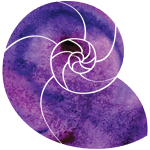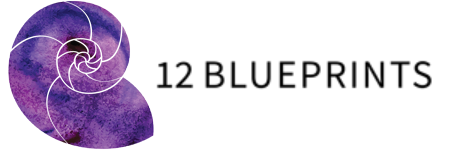The video is also here on YouTube.
The blog post below is an excerpt from the video showing the infographics in better detail, with an abbreviated version of the script. The video also features fashion and product images, describing how they work for each Season.
Most everyone can wear most every trend. But. Orange is a colour others notice, compared with the more neutral effect of navy blue. Let’s help you find the version of orange that’s noticed in the best way, be it natural or innovator, that will look great with you and your clothes.
In the previous post showing navy blue for the 12 Seasons, we saw that navy is more straightforward or expected for cool types of colouring, whereas warmer groups adapted navy to a colour that might not be standard navy. Orange is the reverse. Warmer Seasons have more choices, with the examples in this post as a reference for finding others, whereas cooler Seasons' orange may look less traditional.
Spring and Autumn Orange
There are 3 types of Springs and 3 types of Autumns. The image is not divided by type, rather it is showing a general impression of how these two warm groups differ.

Shopping information: https://urstyle.fashion/styles/2992863
The Spring side shows what I mean by standard orange in the lower two items, the colour in a crayon box of basic colours. You see light, medium, and dark variations, and the colour doesn’t become very dark, true for all 3 Springs' orange. The colour is also bright, meaning lots of colour pigment, and it is warmed by clear yellow, as daffodil, dandelion, or the spring sunshine in a child’s drawing.
The Autumn colours are softer (or muted), and earthy, which means soft and warmed by golden orange, appearing darker, deeper, and richer than clear yellow. Lion, not dandelion. Rust, not citrus.
Orange for Summers
As pink as it is orange, if not more so.

Shopping information: https://urstyle.fashion/styles/2992887
Light Summer (top row) has soft cantaloupe (left) on the warm side of the reds for this group, transitioning to cool coral (right) on the cooler side of the range.
True Summer is a Season of cool colours, with very little warmth from yellow or gold. Or, you may say, "I see a little yellow in those pinks! , and I agree. Just like we all have blood and therefore red, so do we all have some kind of yellow, even the cool Seasons. The important question is, what kind of yellow and compared to which other Season? If you look from the cooler pink on the right in Light Summer to the two True Summer pinks, you may see that Light Summer coral is yellower than True Summer. We might call True Summer's orange 'pastel pink coral'.
For Soft Summer, we find colours similar to the clay pinks in the video shown for Soft Autumn, with soft colour that is a touch cooler (bluer).
Orange for Winters
Orange is a warm-associated colour and True Winter, as a cool Season like True Summer, may be challenged to wear orange with ease. Where True Summer wore pastel coral, True Winter wears cherry red extremely well (not shown in this post).
True Winter does have gorgeous saturated reds and lemon yellow that could combine to make orange. It can be in the nature of orange to break some rules and it can be innovative to see it worn that way. In the panel below, the blouse in the centre is a synthetic, very bright orange and because Winter is also a high-pigment colour group, it can balance these types of colours and use them in flattering ways. This brightness level would overwhelm the warm Seasons that have softer oranges.

Shopping information: https://urstyle.fashion/styles/2992879
As a large area next to the face, this orange might be reflected in the skin tone of any Winter. As an area in a print or an accessory, the colour can be modern and provocative in combinations with navy, royal blue, or pomegranate juice, and with the Winter neutrals of white, black, and steel. The video shows options for wearing orange in the lower half, in combinations with True Winter colours in the upper half. By having brightness of colour in common, they make sense of one another in outfits.
Bright and Dark Winter groups do contain warmth from yellow or gold in their natural colours. Bright Winter orange may be golden strawberry red and Dark Winter orange wears dark coral beautifully, both of which are shown in the video. They also have synthetic orange examples, also shown in the video.
Comments or questions?
I'd be happy to answer. Please leave them in the comments section of the video on YouTube, link at the top.


